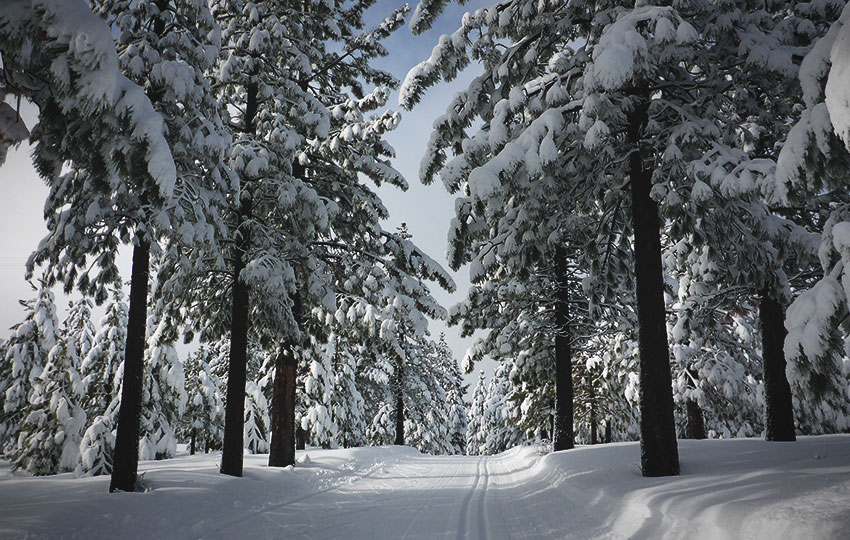
This article about waxing your waxless cross-country skis is, as you might imagine, the result of me being frequently asked the same questions about waxing waxless cross-country skis!
Technique and gear form an integrated whole when it comes to cross-country skiing. So, although I provide relatively short answers to common questions here, I do encourage you to research further the art of cross-country skiing.
Explore my series of articles and videos titled Cross-Country Skiing Explained. And, seek out other cross-country skiing resources for a better understanding of how everything ties together.
I don’t mind repeating myself. Really.
Support Tahoe Trail Guide with a financial contribution via PayPal (single contribution) or Patreon (reoccurring contributions). Your support of Tahoe Trail Guide is very much appreciated!

However, the volume of waxing-related questions that I’ve received online and in person has increased significantly in recent years. So, I thought it would be helpful for everyone (myself included) if I collected relevant questions about waxing waxless xc skis in one easy-to-find article.
Just know that the answers I provide here are snapshots of a larger picture.
Also note that my approach to waxing cross-country skis is more about function than performance. I don’t intend to address racing-oriented wax theory and application. I’m simply not qualified to speak in-depth on the subject.
Besides, my preference is to spend less time in the wax room (or garage) and more time on the snow.
I like to get in the ballpark when it comes to marrying the type of wax I’m using with the snow conditions present. However, if all I have at-hand is universal wax I’m going to use it. Or, if I only have time to brush my skis I’ll do that and go skiing.
Even in the worst of conditions, though, proper technique can overcome the inadequacies of improperly waxing for the conditions. At least, I would argue, that this applies in a recreational environment.
All of that said, I do wax all of my waxless cross-country skis frequently throughout the season and encourage to do the same.
Keep in mind that this article is a work-in-progress. I will continue to add relevant questions as they arise.
In the meantime, I hope this collection of FAQs helps you get started on your way to an enjoyable cross-country skiing experience!
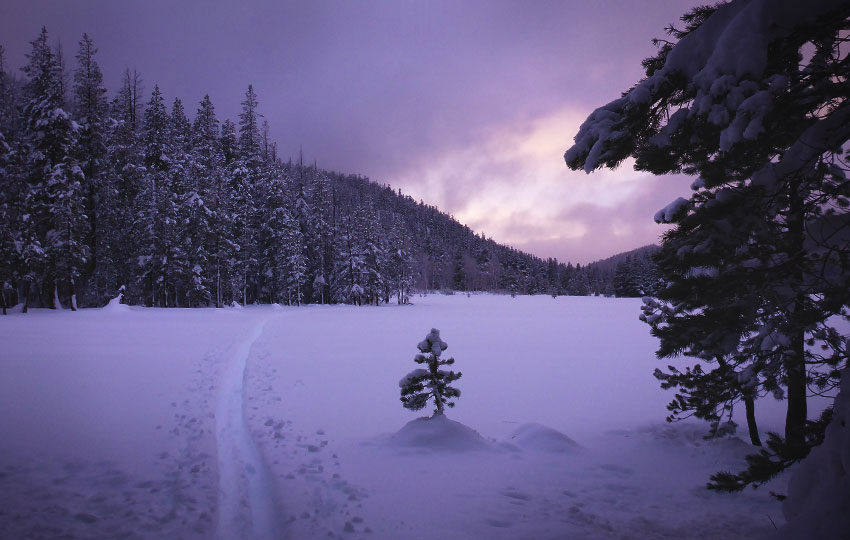
Do I Need to Wax My Waxless Cross-Country Skis?
Should you wax your waxless xc skis?
Yes. You need to regularly apply glide wax to the tips and tails of your waxless cross-country skis.
If you don’t use glide wax, you run the risk of not getting any glide while skiing. Also, there’s a greater tendency for snow to stick to the bottoms of your cross-country skis.
Watch my introduction video to waxing waxless xc skis and continue reading for a brief description of waxless xc skis…
When waxless cross-country skis were introduced decades ago, the “waxless” part of the name primarily referred to the grip zone. And this is still true.
For cross-country skis to perform as intended, they need a means of momentarily sticking to the snow in order for you to push off. This function was originally accomplished by applying underfoot a temperature-specific wax that would stick to the snow.
That meant you had to apply glide wax to the tips and tails of your cross-country skis for gliding purposes. And, you had to apply grip wax to the grip zone in order to push off. Combined, this constitutes a lot of work just to be able to head out to the local park for a brief winter adventure. And, often people would apply the incorrect grip wax (for the type and temperature of snow) and wind up slipping everywhere. On top of that, grip wax such as Klister is super messy with which to work.
So, waxless cross-country skis were conceived.
Ski manufacturers replaced the need for grip wax by incorporating directly into the grip zones of cross-country skis various textured patterns. Most of these designs took on a scalloped pattern that looks similar to “fish scales.” Nowadays, all the rage is mohair-type grip zones. I still prefer the standard fish scale-types as they work good enough in all conditions.
Lastly, I always recommend applying the slightest amount of glide wax to the scale pattern of your skis to reduce the likelihood of snow collecting in the grip zone.
How Do I Wax My Waxless Cross-Country Skis?
Time needed: 30 minutes
How Do You Wax Your Waxless Cross-Country Skis (how-to)?
- Brush the bases free from debris and old wax with a steel or bronze brush
Which brush you choose depends on how dirty the bases are. Steel brushes are more aggressive and appropriate when a lot of dirt, pine sap, old wax, other debris, and oxidized fibers (gray/white aspects of the ski base) are present in the base.
If you wax and brush your xc skis often, most likely a bronze brush will be sufficient enough to clean the bases free of debris and old wax.
- Apply new glide wax using a hot iron for the temperature and conditions of snow in which you’ll be skiing
Only use an actual ski-oriented waxing iron as you can set specific temperatures for the glide wax you’ll be applying. Colder-rated glide wax will require higher temperatures in which to melt than warmer-rated waxes. Only use as much heat to melt the wax (not to burn it).
Do not use a household iron since you can’t adjust it to specific temperatures.
- Scrape the new wax from the base using a plastic scraper
Plastic scrapers will be effective at scraping away the majority of excess wax from the base of the ski.
Do not use a metal scraper for removing wax as it will also remove base material.
- Brush the remaining wax from the bases using a bronze brush and then a fine nylon brush
Brush until you can’t remove any more flecks of glide wax from the base of the ski. Start with the bronze brush for a handful of passes (in a tip to tail direction). Then finish with a fine nylon brush to remove very fine particles and to “polish” the base.
Brushing helps to open up the ski base’s structure, which decreases the amount of suction that can occur.
The above sequence is the basics of waxing your waxless cross-country skis. However, for most people who’ve never waxed skis or snowboards before, the question requires a little longer explanation.
I recommend reading my introduction article to waxing your waxless xc skis first. And, then, reading and watching my step-by-step tutorial about hot waxing your xc skis for an in-depth look at the subject.
If you want to just get to it, however, this video shows the basic waxing process in ten minutes.
An even quicker approach is featured in this short, 5-minute video of me waxing my waxless cross-country skis. However, I don’t recommend this as a long-term approach.
Lastly, an option that’s quick, but not a long-term solution, is to simply apply a universal liquid or paste wax such as Swix F4 or Toko Express Wax.
Are Universal Liquid and Paste Waxes, such as Swix F4 or Toko Express Wax, Appropriate for Waxing My Waxless Cross-Country Skis?
Yes. For recreational cross-country skiing, universal liquid and paste waxes are fine for waxing your waxless cross-country skis.
These types of waxes are convenient because they don’t require a hot iron, scraping tool, or brushes with which to apply. You simply rub the wax on the bases of your cross-country skis and let them set momentarily. Then, you’re free to go skiing.
In addition to increasing glide, they’ll decrease the amount of ice and snow that sticks to the ski bases. This can happen in certain winter conditions, causing your skiing experience to be somewhat miserable. For example, snowstorms that yield fresh but saturated snow. This wet type of snow is great for making snowballs and snowmen. However, it’ll relentlessly cling to the bottoms of your cross-country skis.
Quick universal waxes can also help in spring skiing conditions. This is because the snow will often get baked by the midday sun and then turn to the consistency of sticky mashed potatoes. This, too, results in snow clinging to the bases of your cross-country skis.
Be sure to also rub a little liquid or paste wax on the scale pattern of you waxless skis. Many people tend to neglect this textured area underfoot. And, although I agree that it seems contradictory to apply glide wax to the grip zone, those scales will always become dry without treatment. This then enables snow to easily stick to it.
All of that said, universal and liquid paste waxes are usually only good for one-time use applications.
Easy on. Easy off.
Also, they’re not temperature specific. So, it can be hit or miss as to whether or not they truly provide glide.
Universal means they’re good in most conditions, but not great at any one condition.
I agree, however, that it’s better to wax your waxless cross-country skis with a universal liquid or paste wax rather than do nothing to them at all.
One last piece of advice I’d offer is that only using universal and liquid paste waxes is not a long-term solution for maintaining the bases of your cross-country skis. I recommend eventually learning how to properly wax them, hot iron and all, so that you can get the most life out of your xc skis.
You could also modify the process I demonstrate in my 5-minute video by omitting the hot iron step and just rubbing on the hard wax and then brushing it out. Not as effective, but I do it when I only have a minute or two to prep my skis before going out.
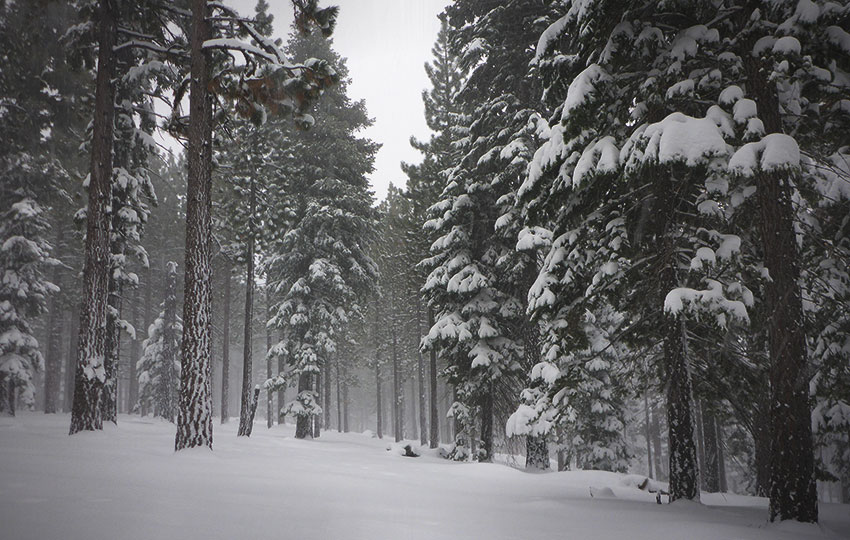
Can I Use Liquid or Paste Waxes Instead of Hot Waxing?
Do liquid and paste waxes replace the need for hot waxing?
You can use liquid and paste waxes instead of hot waxing in the short-term. But, liquid and paste waxes don’t replace the need for hot waxing.
So, for recreational cross-country skiing use a paste or liquid glide wax instead of hot waxing.
At least for a while.
Quick liquid and paste waxes are far easier, quicker, and less messy to apply. I use them frequently throughout the season when I’m in a hurry or if I’m performing “touch-ups” between hot waxing my cross-country skis. I also carry with me on most xc ski sessions a small tin of F4 paste wax for emergency purposes.
That said, liquid and paste wax won’t last very long.
Easy on. Easy off.
And because they’re “universal,” the wax isn’t specific to any temperature range.
Liquid and paste wax is OK for all conditions but not great for any one condition.
Probably more detrimental to your skis, however, is that most people who exclusively use paste or liquid wax never actually brush out their ski bases. So each time you apply more of that paste or liquid wax, you’re just adding more goop to the mix.
No matter how clean-looking the snow is that you’re skiing on, you’re still going to always collect tiny bits of debris between the fibers of the ski bases. If you just keep putting more liquid or paste wax over the top, you’re just sealing in all of that garbage.
I’ve seen the compounded effects on the bases of skis when only liquid or paste wax is applied without ever brushing them clean. The bases of the skis wind up resembling coarse grit sandpaper. When that happens you can no longer see the structure of the ski’s base, which is essential to decreasing suction and friction.
My recommendation is that if you’re going to primarily use a liquid or paste glide wax, you should invest in a bronze brush. Then, prior to applying the fresh liquid or paste glide wax, brush out the ski bases with that bronze brush.
Honestly, you’d probably do more good for your skis just by brushing them out rather than applying any type of paste or liquid glide wax (if you could only choose one of those options). Ask any dentist, and they’ll tell you that toothpaste is fine but it’s really the mechanical action of brushing that gets your teeth clean. This is not unlike treating the bases of your cross-country skis.
By no means am I saying not to use paste or liquid wax. I do, after all. I just believe it’s exponentially more beneficial to also use a bronze brush. And, to hot wax them after every few xc ski sessions.
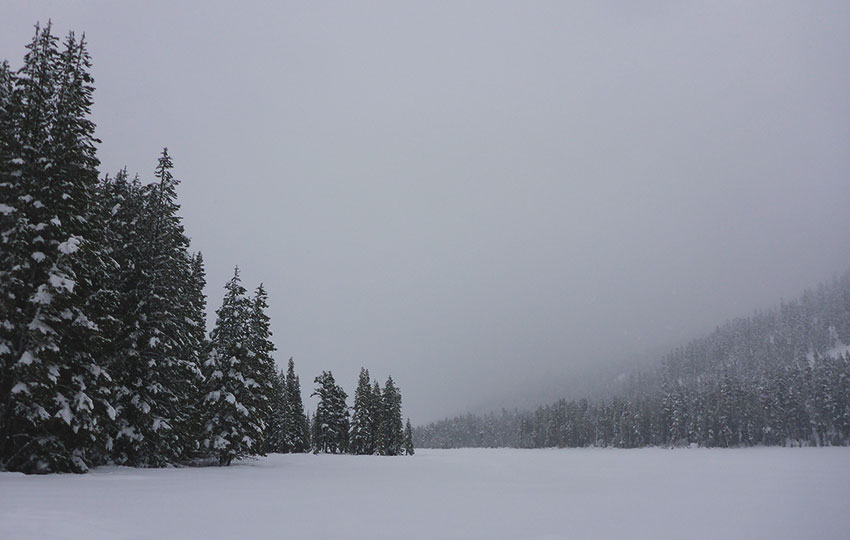
How Long Should it Take to Wax My Waxless Cross-Country Skis?
This will depend upon your waxing skills and experience, and whether or not you hot wax your skis or just use a rub-on liquid or paste wax.
Generally speaking, though, it takes me about 15 minutes (including setup and cleanup) to hot wax one set of my cross-country skis. I also don’t hot wax them every time I go skiing. Often, I’ll brush my skis using a bronze brush for 2-4 more ski sessions before I hot wax them again.
If I’m rotating between the different skis that I own, I can decrease the frequency of hot waxing any one pair even more. That said, when I do this there will eventually be the day on which I must hot wax 3-6 different pairs of skis. And, I can assure you, that will take longer than 15 minutes.
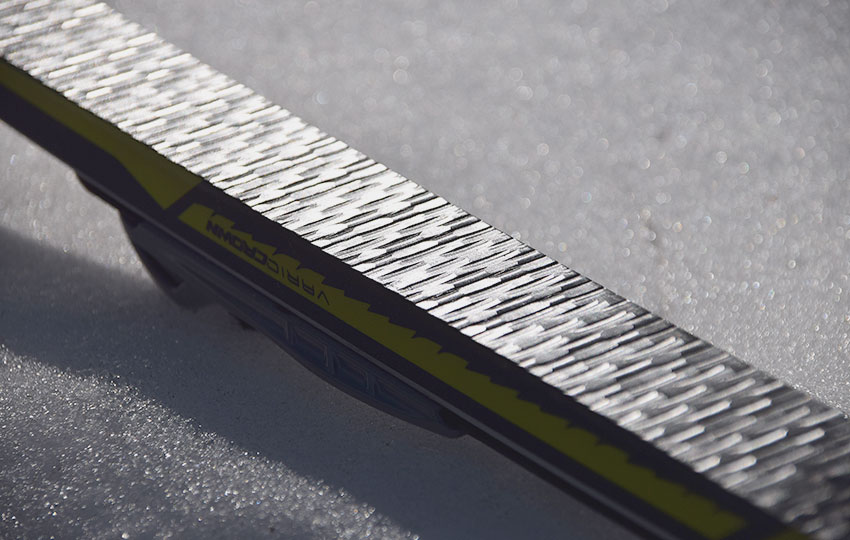
Should I Do Anything to the Fish Scales of My Waxless XC Skis?
Yes. You should apply the slightest amount of glide wax to the scale pattern of your waxless cross-country skis. I typically will just use a universal liquid or paste wax.
I also recommend brushing out the scale pattern (with a bronze brush) after hot waxing your cross-country skis.
If you don’t do anything to the scale patterned grip zones of your waxless xc skis, snow will tend to collect in that area. Then, in various circumstances, snow will clump up underfoot rendering the grip zones useless.
It’ll also decrease your ability to glide because the clingy snow will be dragging along.
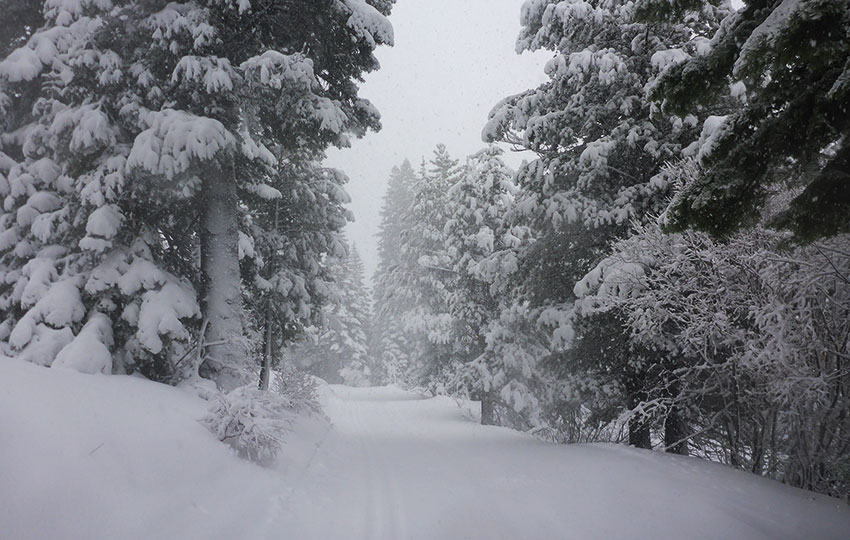
Should I Use a Summer or Storage Wax on My Waxless XC Skis?
Yes. Applying “summer” or “storage” wax to your waxless cross-country skis is a good idea.
Using a storage wax will help prevent the bases of your xc skis from drying out in the off-season. This is especially important if you store your skis in a location that attracts heat (i.e. shed that gets baked in the sun all summer long).
Obviously, I don’t recommend storing your xc skis in such a location. Instead, put them somewhere that’s cool and away from direct sunlight.
Preparing your waxless xc skis for summer storage is easy to accomplish. This assumes, though, that you have a ski waxing iron and block wax.
I’ve never heard of wax designed specifically for storage purposes. Everyone I know just uses standard glide wax (block). And because waxing your xc skis for summer storage is an administrative task versus a performance-related one, you can just use a universal glide wax.
Some people prefer to use a softer wax (warmer), whereas others lean toward a harder (colder) wax. I would just say that you should stay away from the extremes at either end of the spectrum. Don’t use a wax that’s too soft or too hard. But using any wax, regardless of temperature rating, will be better than nothing.
I wouldn’t directly apply block wax to the scale pattern of your waxless xc skis. I would use a liquid or paste wax in that area to keep it from drying out over the summer.
Apply the storage wax the same as you would when applying glide wax during the regular season. Just don’t scrape or brush it off. And, I probably do apply a slightly thicker layer since it needs to last all summer.
Can I Use Old Glide Wax on My Waxless Cross-Country Skis?
Or, are newer waxes better?
As far as I know, wax doesn’t really go bad. If it is glide wax, I’d just go ahead and use it to save yourself some money.
There are superior waxes on the market compared to what you probably have. However, unless you’re racing I wouldn’t worry about it.
Besides, the expensive and high-end waxes that have used long-chain fluoros are on their way out. There was a big wax industry shake-up in recent years that involved the EPA and the manufacture and importation of fluoro-based waxes.
Ultimately, long-chain fluoro-based waxes have been deemed to be environmentally and humanly hazardous.
So, I just stick with basic non-fluoro wax because it’s less expensive, less environmentally and personally hazardous. And, I don’t race.
Vintage Wooden Wax Profile
Over the years, many people have inquired about the vintage wooden wax profile that’s featured in many of my cross-country ski waxing videos. I no longer own it, as I donated it to my local high school’s Nordic team a few years ago.
Also note that I didn’t actually build this wax profile. Instead, I inherited it from a part-time job at which I worked where we had a small fleet of cross-country skis available to rent. The owner of the business had received it from the xc ski representative from which he purchased cross-country skis. But that’s the extent of its history that I know. In other words, I don’t know who actually built it (i.e. hobbyist or a professional ski wax company).
Before donating the wax profile, I did take photos of it (presented below – click each image for its full-sized photo) for people to use in the creation of their own DIY wax profile. Unfortunately, I lost my notes with its physical measurements. Instead, I offer the following list are considerations if you decide to make your own profile.
- Build your wax profile (dimensions) based on the skis in which you’ll be waxing most often.
- I believe the two main pieces of wood were essentially made with 2×6″ lumber.
- I have no idea where the locking mechanism or rail system originated. The complexity of the locking mechanism leads me to believe this whole wax profile was created by an actual wax manufacturer.
- But as cool as the locking mechanism looks, I was never happy with it. The flat plates never properly secured the ski from popping up and out. I would have to put a lot of pressure on the ski’s sidewalls or, worse, bindings (that extended beyond the sidewalls) in order to get the skis to stay put. At one point I used an adhesive-backed foam strip on either side of the metal plates, but that didn’t help as much as I had hoped. My recommendation is to use some sort of clamp that only features a thin strip or narrow (soft/rubber) surface area to hold the ski in place.
- For waxing wider, off-track and backcountry cross-country skis, build a profile that’s wider (i.e. at least double the width of the one featured below). Whenever I tried to wax wide skis on the wooden profile, the skis would always flop to one side or the other because it’s so narrow. Also, the locking mechanism was too narrow for the skis to hold them in place.
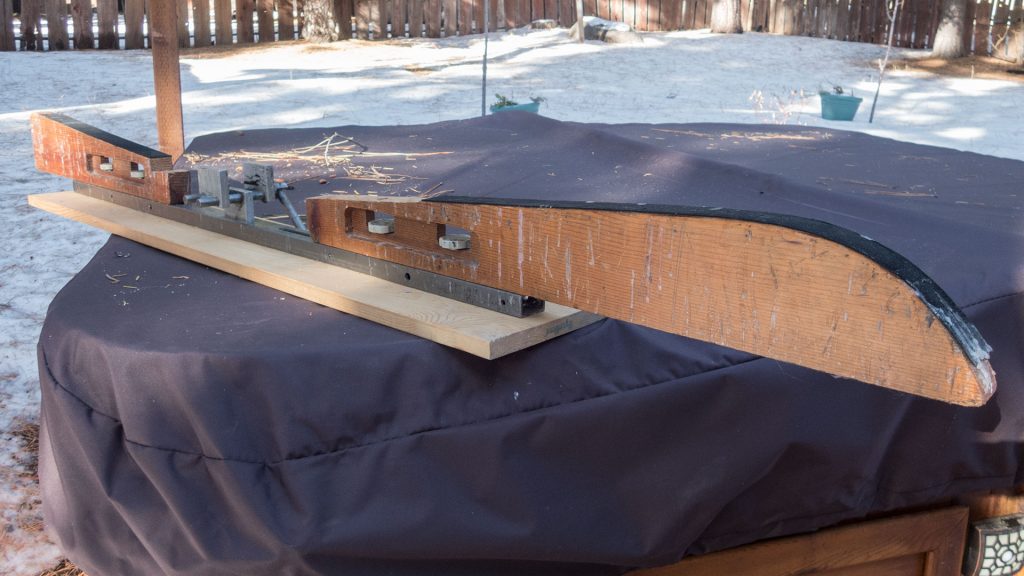
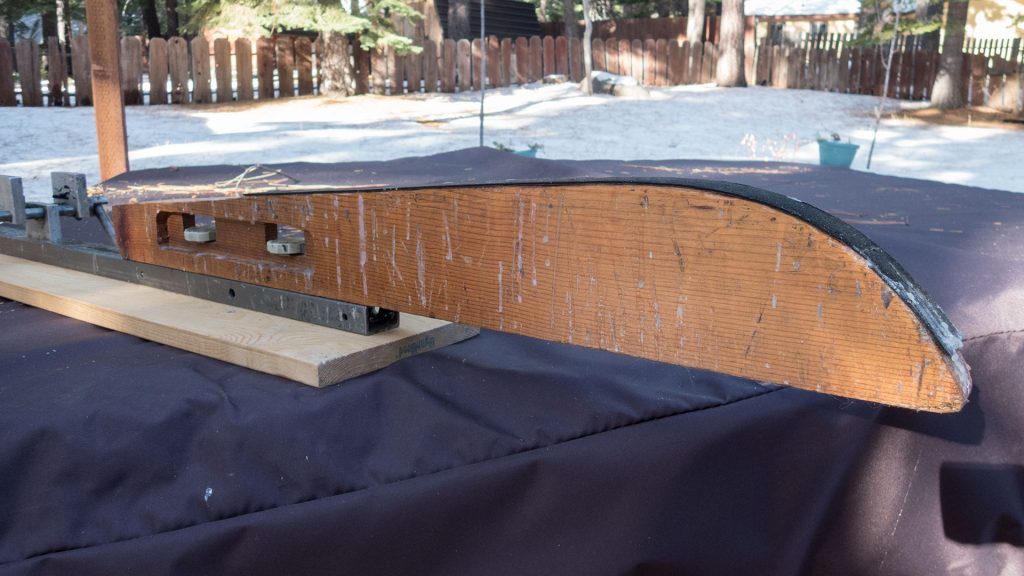
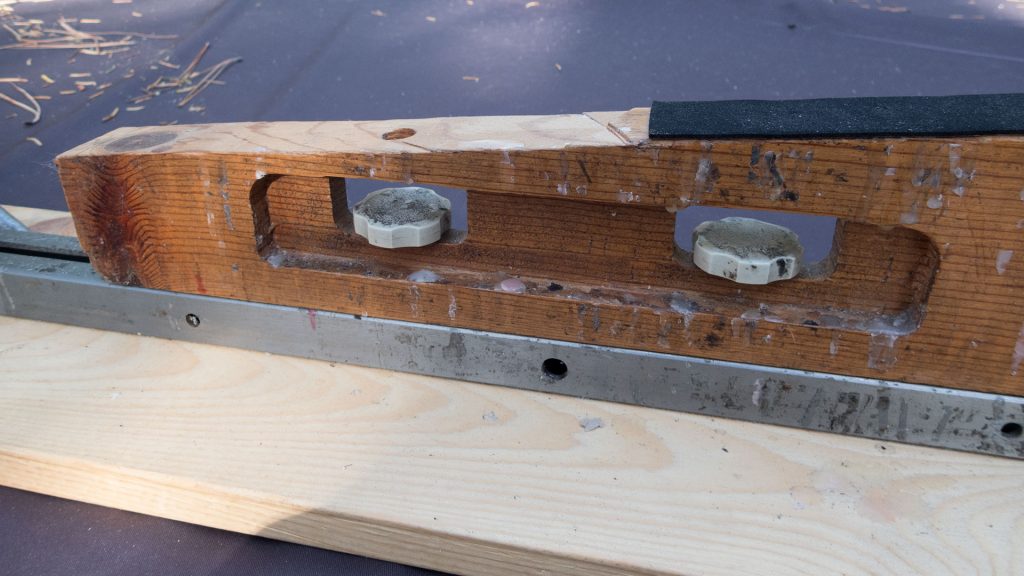
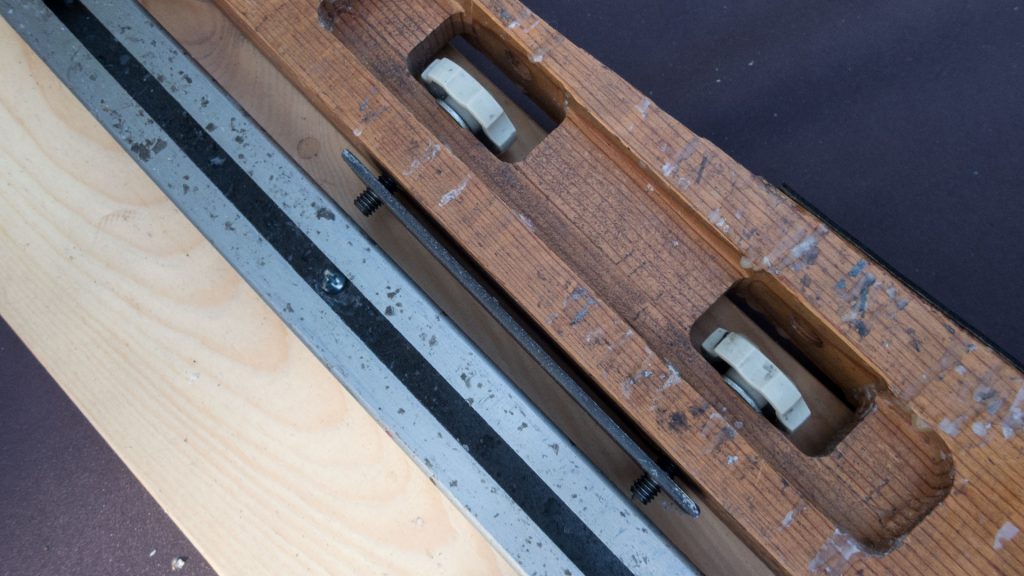
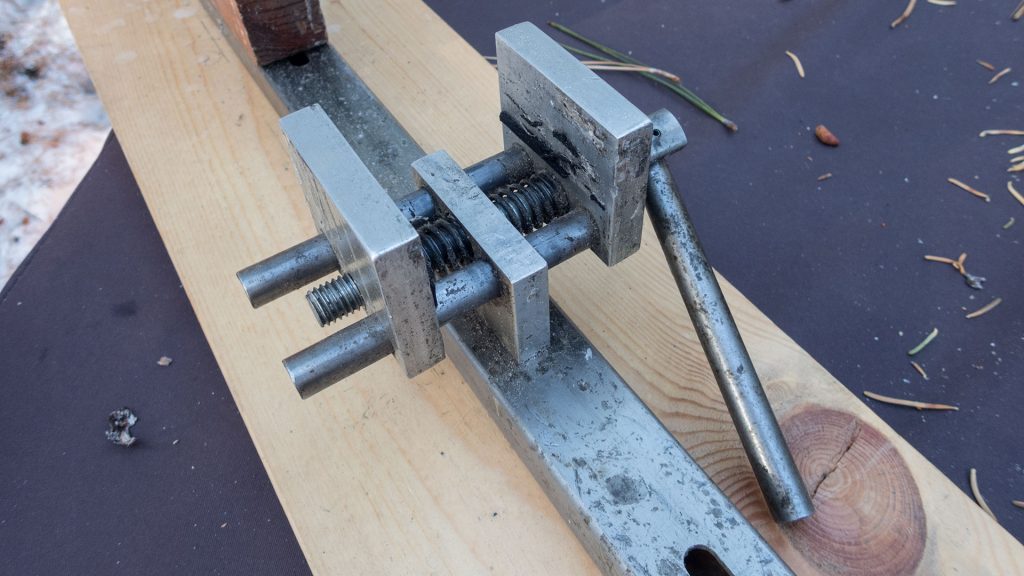
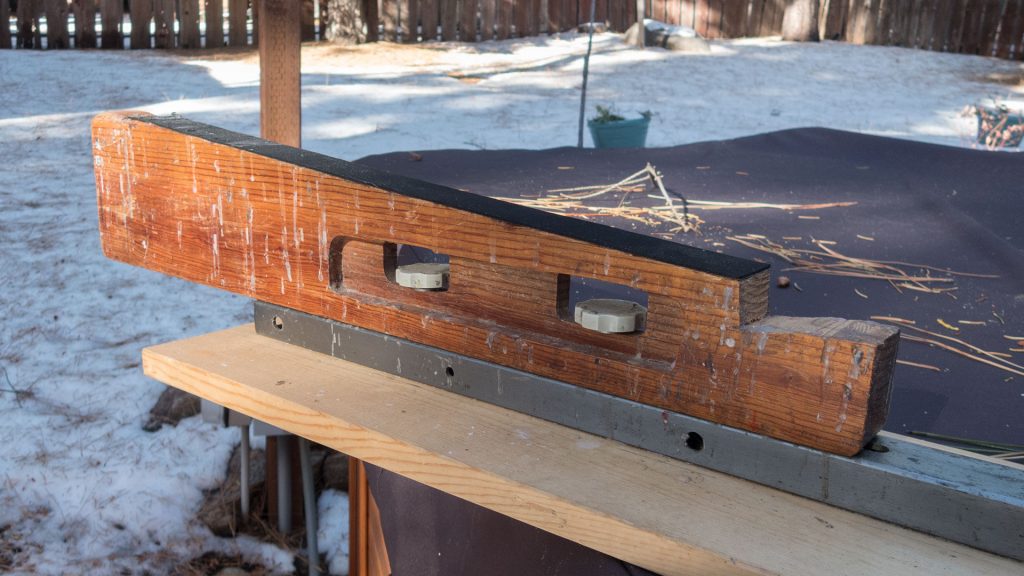
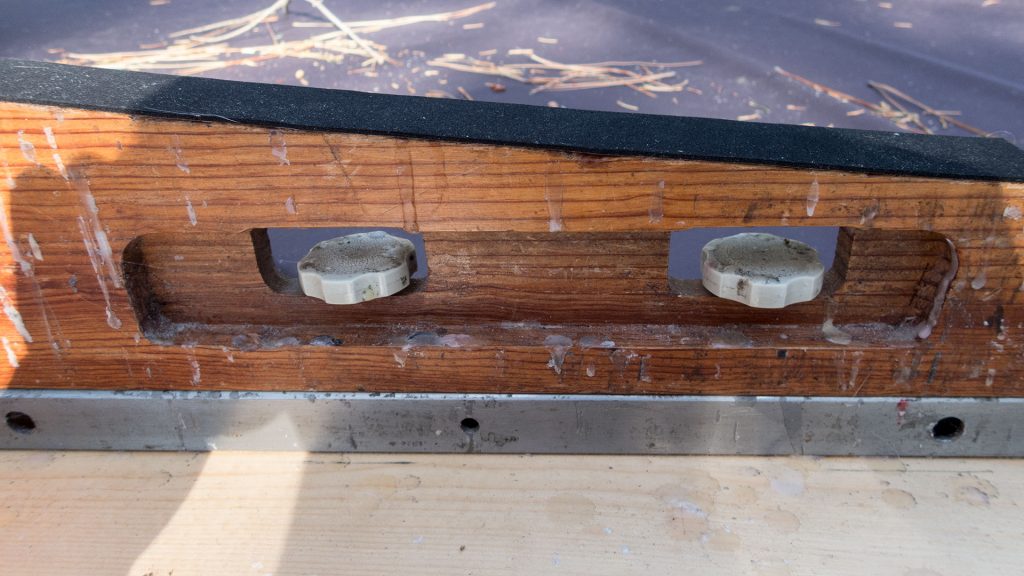
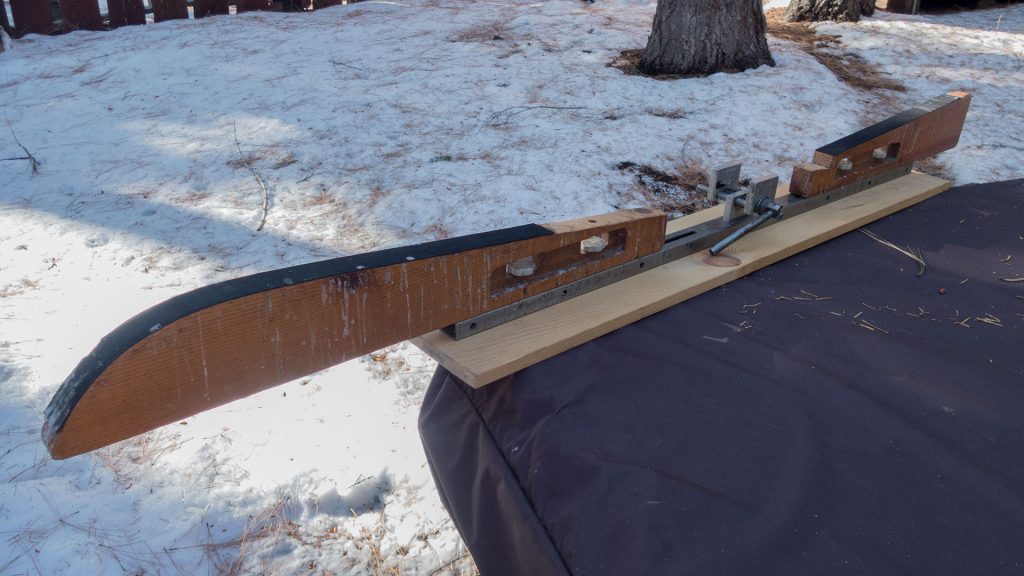
Check out The Complete Guide to Cross-Country Ski Preparation #ad by Nat Brown. This book provides an in-depth discussion of preparing your skis. And, although it’s a bit cerebral for beginner skiers and people with little knowledge of skiing technique, the information is presented in an easy to understand format. Therefore, I find it to be an invaluable resource that provides a thorough overview of cross-country ski preparation, which ultimately will help you to become a better cross-country skier. Follow the Amazon link and you should be able to find some options for buying a used copy. Highly recommended and worth having in your library.
Cross-Country Skiing Explained Articles and Videos
Please note that I wrote and produced the Cross-Country Skiing Explained series of articles and videos with the beginner and intermediate cross-country skier in mind. This is the demographic for whom I most often serve(d) while working in the outdoor recreation industry at Lake Tahoe. I basically treat these articles and videos as extensions of the conversations that I have (had) with those customers.
That said, expert skiers probably could take away something of value from these resources. Just know that I don’t address race-oriented philosophy, technique, or gear selection.
Considerations for buying cross-country ski gear (new and beginner xc skiers)
- Intention, Types of XC Skis, and Whether to Buy New or Used (Part 1)
- How Much Gear to Acquire, Evaluate Your Commitment, Value of Taking XC Ski Lessons (Part 2)
- Can One Set of Classic Cross-Country Skis Work for Groomed and Off-Track XC Skiing? (Part 3)
- Can I Use One Set of XC Ski Boots for All of My Cross-Country Skiing Needs? (Part 4)
- Overview of Off-Track and Backcountry Cross-Country Ski Gear
- Invest in Technique More than Gear
Classic Cross-Country Ski Components
- Introduction to Classic Cross-Country Skis (Part 1)
- Geometry of Classic Cross-Country Skis (Part 2)
- The Grip Zone of Classic Cross-Country Skis (Part 3)
- Types of Bindings for Classic Cross-Country Skiing (Part 4)
- Ski Boots for Classic Cross-Country Skiing (Part 5)
- Classic Cross-Country Ski Poles (Part 6)
- FAQs about Classic Cross-Country Skiing
Waxing Your “Waxless” Cross-Country Skis (for beginner and intermediate xc skiers)
- Introduction to Waxing Your Waxless XC Skis
- Step-by-Step Waxing Tutorial
- FAQs About Waxing Your Waxless XC Skis
Cross-Country Skiing Techniques, Demonstrations, and Related Concepts
- Outdoor VLOG (emphasis on the cross-country skiing experience)
- Cross-Country Skiing in Challenging Conditions
- Considerations for Winter Adventure in Lake Tahoe’s Backcountry
- Using the Side-Step and Herringbone Techniques in the Backcountry
- 10 Tips for Spring Cross-Country Skiing in the Backcountry
- 5 Reasons to Love Spring Cross-Country Skiing
- Considerations for Cross-Country Skiing During the Fall and Early Winter
- Discussing the Goal of Becoming a Better Cross-Country Skier and Embracing Backcountry and Groomed Terrain in Pursuit of that Goal
- The Cross-Country Skiing Experience: Immersing Yourself in Winter
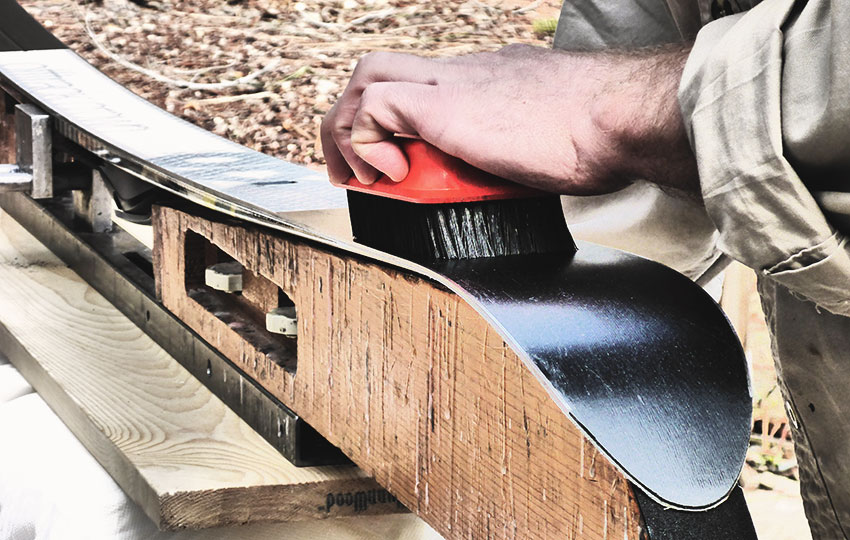
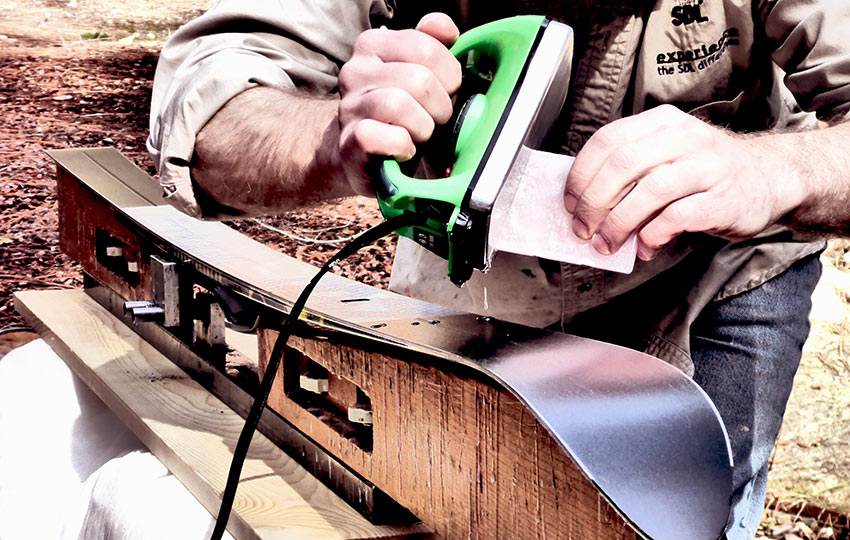
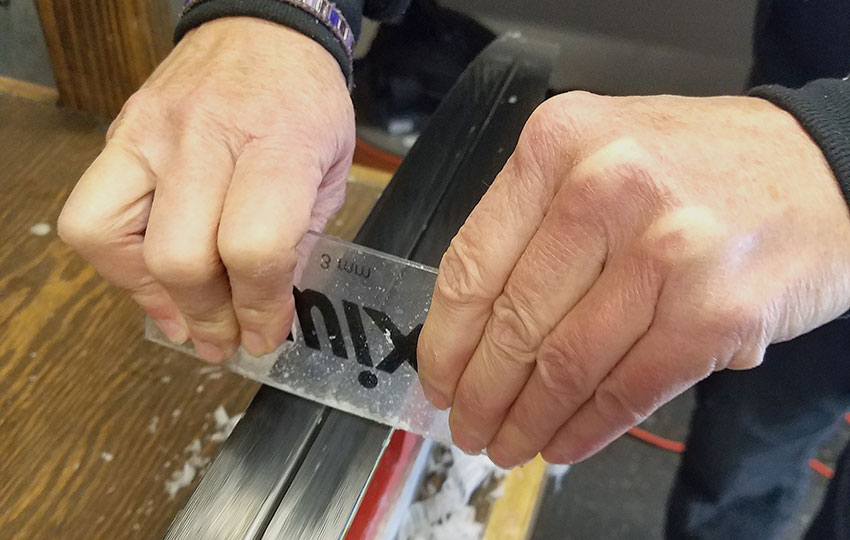
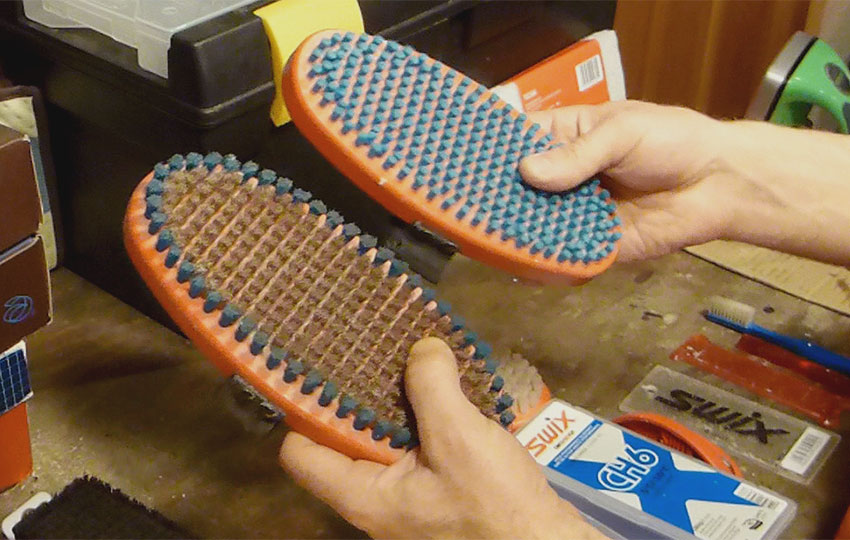
interested in your thoughts on when to do a base grind on waxless skis. i’m a recreational skier, not racer and spend most of my time in a classic groomed track. have talked with a few people who suggest doing it when the base is substantially scratched up, when you feel ski suction, or when the ski base “loses structure.” is there a basic way of thinking about this to know when it’s worthwhile?
Hey DA,
I apologize again for the delayed response! For whatever reason this time your comment ended up in the spam folder. Weird since you’ve already posted other comments. Again, I’m sorry.
Anyway … from my understanding, most xc racers will only base grind their skis twice or maybe three times (at the absolute most). I’ve never had any of my skis ground, and I don’t know that I will since they’re just for recreation. I have some rock skis that are totally scratched up that I’ve been using a Kuzmin brand base scraper (recommended by M. Johansson in comments here on the site) to eliminate the scratches and flatten the bases. I’ve had moderate success with that base scraper. I believe I paid around $75 for it online, so it’s probably less expensive than a full base grind and you get to use it for a longer period of time.
I personally think a better litmus test for a base grind (other than scratches or “lost” structure) is how convex the base of the ski is.
Scratches often will run inline with the ski, so that’s not a super critical factor in my opinion. If you had a series of scratches running perpendicular to the ski, then I’d be a little more concerned because they’d be contrary to the direction of travel.
A ski’s structure should always remain present in some form or fashion unless you’ve somehow melted the bases completely and turned them into a non-porous piece of plastic. In generic terms, structure is simply the spaces between the base fibers. Sure, it starts out from the factory in a directional fashion. However, you can always add temporary directional structure to a ski base with a rill. Again, though, the actual spaces between the base fibers (which is considered “structure”) that helps decrease suction won’t ever really be lost as far as I know. I also frequently brush out my ski bases to remove old wax and natural debris that’s picked up along the trail (to “open” the structure).
I just think that the most important thing would be whether or not your skis are flat. A flat ski is a fast ski. And a flat ski provides a better connection to the snow leading to more stability and confidence in technique. One of my more used pairs of skis definitely has a slight ridge running down the center of the base (sides are shaved down from edging the skis). This is obvious to me whenever I scrape them after hot waxing. But I’m currently unwilling to do anything about it as they’re my favorite skis. I’m sure I’ll eventually put that base scraper to those skis as well.
If I were you, I’d probably check out a metal base scraper and see how flat and free of scratches you could make your skis on your own. Unless, of course, you have a hook-up for an inexpensive base grind. I just think for recreational purposes, a base grind would probably be “excessive.” Or, you could just buy a new set of skis and keep those older ones for rock skis. That’s basically what I did, and why I’ve been experimenting on those old, beat-up skis with the base scraper.
Not sure how helpful that is to you, but it’s my two cents 🙂
Good luck, and let me know what you eventually do!
found your site through a google search “waxing waxless skis.” the video tutorials were so helpful. before, i’d usually just wipe down the classic waxless ski base with a paper towel and apply a liquid universal glide wax tip to tail before each ski session. now, i’ve got a new understanding of what to do to maintain and get the most out of my skis. great content, many thanks!
Hey DA,
Sorry about my delay in response. It was a busy work weekend with the MLK holiday 🙂
But I’m glad you found the information on my site about waxing your waxless xc skis helpful. The universal glide wax is fine for short-term use, but not something I recommend without putting your skis through a hot wax session periodically, in addition to brushing them with a bronze brush, for example, to clean the bases thoroughly.
Let me know if you have any other questions. And, thanks again, for tuning in 🙂
“Yes. You definitely need to regularly apply glide wax to the tips and tails of your waxless cross-country skis. ”
I am of a different opinion, and that is that you don’t need to apply glide wax if you have an appropriate base scraper. Here is how it is used: http://www.youtube.com/watch?v=WKwZYvuiPUM
I did end up buying a Kuzmin base scraper at the end of last season. I’ve experimented with it a couple of times so far this season on an older pair of skis. I’m still on the fence about it, but I do like how it corrects/flattens out the base (i.e. when the center is higher than the sides from edging the skis). But I wonder how times or how frequently you can use it before it completely shaves the base off?
You can base scrape your skis many times if they are not extremely uneven or worn out, but then they should be discarded anyway.
I’ll keep working with the Kuzmin to see if I can make it work.